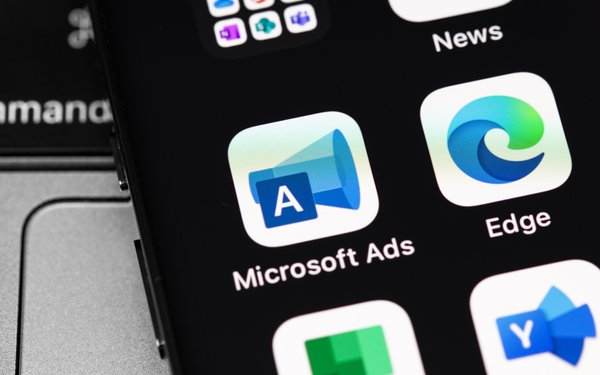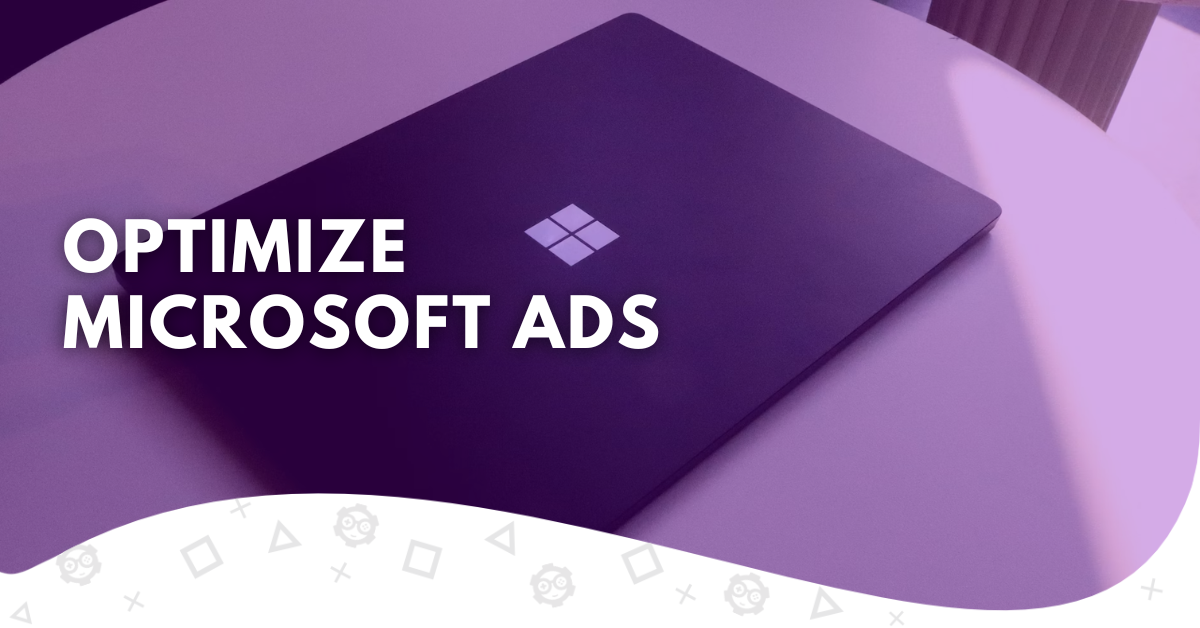In the ever-evolving landscape of online advertising, the battle for visibility and relevance on search engines has become more crucial than ever. While Google Ads often dominate the conversation, savvy advertisers understand the untapped potential of Microsoft Advertising, formerly known as Bing Ads. This platform offers a unique space to connect with potential customers directly, with less competition and often at a lower cost.
In this comprehensive guide, we’ll delve into the intricate world of Microsoft Ads and show you how to optimize your campaigns for success. From ad groups and ad copy to landing pages and target audiences, we’ll explore every facet of Microsoft Advertising to help you achieve the best return on your investment.
What is Microsoft Ads?
Microsoft Advertising is a robust advertising platform that allows businesses to promote their products and services on the Microsoft Search Network, which includes the Bing search engine. With millions of users conducting searches on Bing and Yahoo, Microsoft Advertising offers a valuable space for businesses to enhance their online presence and connect with potential customers.
Here are some key aspects of Microsoft Advertising that advertisers should be aware of:
Ad Campaigns
Microsoft Advertising allows you to create and manage ad campaigns to target specific audiences. These campaigns can be tailored to various goals, such as driving website traffic, increasing conversions, or boosting brand awareness.
Ad Groups
Ad groups are segments within your ad campaigns, each focusing on a specific set of keywords and ad copy. Organizing your ads into well-structured ad groups is essential for optimizing performance.
Keywords
Like in Google Ads, Microsoft Advertising relies on keywords to display your ads to users searching for relevant terms. Properly optimizing keywords is a crucial part of ensuring your ads reach the right audience.
Ad Copy
Your ad copy is what potential customers see when your ad is shown. Crafting compelling and relevant ad copy can significantly impact your click-through and conversion rates.
Why Use Microsoft Ads?

Regarding online advertising, the first platform that often comes to mind is Google Ads. While Google Ads is undoubtedly a powerful tool, savvy advertisers increasingly use Microsoft Advertising to complement their marketing efforts. But why should you consider using Microsoft Ads? Here are compelling reasons:
Less Competition, Lower CPCs
One of the most significant advantages of Microsoft Advertising is the opportunity to tap into a space with less competition. While Google Ads is the go-to platform for many advertisers, Microsoft Advertising often offers lower costs per click (CPCs) due to decreased competition. This can result in a more cost-effective advertising strategy, making it an attractive option for businesses looking to maximize their advertising budget.
Microsoft Advertising can also be significantly cheaper than Google Ads for an extensive range of keywords, making the platform more affordable to some advertisers.
A Different Audience
Microsoft Advertising provides access to a unique user base. With millions of users conducting searches on Bing and Yahoo, you can reach potential customers who might not use Google as their primary search engine. By diversifying your advertising strategy, you can expand your reach and connect with a different segment of your target audience.
Google sites were ranked first amongst the most visited multi-platform web properties in the United States, with just over 274.49 million unique visitors and a market share of 61.4% among leading US search engine providers.
In comparison, Microsoft’s audience is still vast: 13.7 billion monthly searches from PCs and 638 million unique PC users, reaching 63 million users that Google doesn’t. Additionally, Microsoft’s audience is both more educated and more affluent, with a third of Microsoft users in the US having a household income over $100k.
Microsoft Advertising Tools
Microsoft Advertising offers a range of tools and features to help advertisers fine-tune their campaigns. These tools include ad extensions, scheduling, bid adjustments, and more. Leveraging these features allows you to create highly targeted and efficient ad campaigns.
Integration with Microsoft Services
Microsoft Advertising seamlessly integrates with Microsoft’s suite of services, including Microsoft Ads Editor and Microsoft Merchant Center. This integration makes it easier to manage your advertising efforts and access valuable insights to enhance your campaigns.
Valuable Demographics and Data
Microsoft Advertising provides valuable demographic targeting options, enabling you to reach users based on age, gender, and location. The platform also offers in-depth data and insights on your campaign performance, helping you make informed decisions to optimize your advertising efforts.
Leverage the Power of Bing
With Microsoft Advertising, your ads have the potential to appear on Bing, which is the second-largest search engine in the United States. This expanded reach can help you connect with even more potential customers.
Moreover, it is possible to use GPT-4 for free with Bing AI Chat, which translates into its constantly increasing number of users. Microsoft’s Bing Chat is powered by GPT-4, customized for search. If you’ve used the new Bing at any time in the last weeks, you’ve already experienced an early version of this powerful model. As OpenAI updates GPT-4 and beyond, Bing benefits from those improvements.
Improved Click-Through Rates
Due to less competition and a unique user base, Microsoft Advertising often results in better click-through rates (CTRs). When your ads are clicked more often, it can lead to higher-quality traffic and more conversions.
The average click-through rate on Microsoft Advertising is 2.83%, which is almost 50% higher than Google Ads’ average CTR.
In summary, Microsoft Advertising is a robust platform that offers a range of benefits, from reduced competition and lower CPCs to access to a distinct user base and a suite of advertising tools. By including Microsoft Ads in your advertising strategy, you can enhance your online presence, increase your reach, and achieve better results while optimizing your advertising budget. Whether you’re a business looking to expand your advertising horizons or an advertiser seeking a more cost-effective solution, Microsoft Advertising makes sense for a wide range of advertising goals.
Optimizing Your Microsoft Ads Campaign

Optimizing your Microsoft Ads campaign is essential to ensure that your advertising budget is well spent and that you’re reaching the right audience effectively. Here are some valuable tips and insights to help you get the most out of your Microsoft Advertising campaign:
Start with Clear Goals
Before you begin optimizing your campaign, define your objectives. Do you want to drive website traffic, boost sales, increase brand awareness, or achieve another goal? Knowing your goals will guide your optimization efforts.
Focus on Relevant Keywords
Keyword selection is critical. Research and choose keywords that are not only relevant to your business but also to the search queries of your target audience. Microsoft Advertising’s Keyword Planner can help identify valuable keywords.
Organize Your Ad Groups
Structured ad groups improve ad relevance and click-through rates. Group related keywords together and create tailored ad copy for each group. This allows you to deliver specific messages to different segments of your audience.
Leverage Negative Keywords
Negative keywords are as important as positive ones. Use them to filter out irrelevant traffic and avoid wasting your budget on clicks that won’t convert.
Craft Compelling Ad Copy
Write an engaging ad copy that highlights the value of your products or services. Use action-oriented language and include relevant keywords to boost ad relevance.
Take Advantage of Ad Extensions
Ad extensions can increase the visibility and value of your ads. Utilize site link extensions, location extensions, callout extensions, and more to provide additional information to potential customers.
Optimize Your Landing Pages
Ensure your landing pages are highly relevant to your ads. A consistent and smooth user experience can significantly impact your Quality Score and conversion rate. To optimize your landing pages, ensure they are highly relevant to your ads. A consistent and smooth user experience can significantly impact your Quality Score and conversion rate. Ensure that your landing pages load quickly, have a clear call to action, and are easy to navigate.
Utilize Ad Scheduling
Use ad scheduling to display your ads when your target audience is most active. This can help you make the most of your ad spend.
Set Clear Conversion Actions
Define what you consider a successful conversion, whether purchasing, filling out a form, or another action. Optimize your campaigns to drive these specific actions.
Monitor and Adjust Bids
Regularly review the performance of your keywords and adjust your bids accordingly. This ensures that your ads maintain a competitive ad rank.
Analyze Search Queries
Examine the search queries that trigger your ads. This data can provide insights into additional keywords to target or negative keywords to exclude.
Experiment with Match Types
Test different match types, including broad match, phrase match, and exact match, to discover which ones deliver the best results for your campaign.
Aim for a High-Quality Score
A high-quality Score can lower your costs and improve your ad rank. Focus on creating relevant ad copies, using effective landing pages, and maintaining a strong click-through rate.
Set Automated Bidding Strategies
Microsoft Advertising offers automated bidding strategies like Target CPA and Target ROAS. These can be highly effective in optimizing your campaigns for specific conversion goals.
Improve Click Through Rate (CTR)
Regularly update and test your ad copies, headlines, and extensions to enhance your CTR, which can lead to more visitors and potential customers.
Continuously Monitor Conversion Rate
Keep a close eye on your conversion rate to ensure that your ads drive the desired actions, such as purchases, sign-ups, or other conversion goals.
Optimize for Mobile Devices
Given the growth in mobile users, ensure your ads and landing pages are mobile-friendly to capture this audience effectively. A responsive and user-friendly mobile landing page provides visitors with the ability to easily navigate, read content, and interact with your website, reducing bounce rates and increasing engagement.
Use Ad Scheduling Effectively
Ad scheduling allows you to control when your ads are displayed. Use this feature to align your ads with when your audience is most active.
Regularly Analyze and Adjust
Regularly review your campaign’s performance data and make necessary adjustments based on the insights you gain. What works for one campaign may not work for another, so be ready to adapt.
Successful Control and Management
Take full control of your ad campaigns and make informed decisions based on performance data. Microsoft Advertising provides powerful tools to help you achieve your advertising goals.
By following these tips and insights and implementing them in your Microsoft Ads campaign, you can optimize your campaigns to achieve better results, higher visibility, and a superior return on your advertising investment. Remember, successful optimization is an ongoing process that requires continuous monitoring and adjustment to stay competitive in the ever-evolving world of online advertising.
Strategic Ad Schedules for Improved Performance

Optimizing your Microsoft Ads campaign goes beyond selecting the right keywords and crafting compelling ad copy. It also involves carefully planning when your ads are displayed to reach your target audience at the most opportune times. Strategic ad scheduling is a crucial element of achieving better performance in your advertising campaigns.
Here, we’ll explore the significance of ad schedules and provide insights into how to plan your ad timings for maximum impact strategically.
The Importance of Ad Schedules
Ad scheduling, also known as dayparting, allows you to control when your ads are shown. This feature is invaluable because not all hours of the day are created equal regarding user engagement and conversions. Here’s why ad schedules matter:
Align with User Behavior: Users’ online behavior varies throughout the day. By scheduling your ads to appear when your target audience is most active or likely to convert, you can improve your campaign’s efficiency.
Cost Efficiency: Managing your budget effectively is essential. Ad scheduling helps you allocate your budget to times that provide the best return on investment (ROI)
Boosting Visibility: By showing your ads during peak times, you can increase your ad’s visibility and the likelihood of clicks.
Avoiding Wasted Clicks: Ad scheduling enables you to avoid showing ads when users are less likely to convert, preventing unnecessary spending.
Steps to Create Strategic Ad Schedules
Analyze Your Data: Start by examining your campaign data to identify patterns in user behavior. Pay attention to when clicks, conversions, and sales are most likely to occur.
Understand Your Target Audience: Know your audience’s preferences and time zones. If you have a global audience, consider segmenting your ad schedules for different regions.
Identify Peak Hours: Determine the hours or days when your target audience is most active. These are the times you’ll want to focus your advertising efforts on.
Set Bid Adjustments: Adjust your bids based on your ad schedule. Increase your bids during peak hours and decrease them during less active times.
Run Tests: Experiment with different ad schedules and continuously monitor the performance of your campaigns. A/B testing can help you identify the most effective ad scheduling strategy.
Optimize for Mobile: Consider the device your audience uses during different times of the day. If mobile usage increases in the evenings, ensure your ads and landing pages are mobile-friendly.
Consider Seasonal Factors: Consider seasonal trends that may impact user behavior and your ad schedules accordingly.
Use Microsoft Advertising Tools: Microsoft Advertising provides tools to help you set and manage ad schedules efficiently. Use them to create, adjust, and analyze your schedules.
Strategic ad scheduling is a powerful tool for enhancing the performance of your Microsoft Ads campaign. By aligning your ads with your audience’s behavior, you can minimize the impact of your advertising efforts, improve click-through rates, and ultimately achieve a higher return on your advertising investment. Regularly monitoring and adjusting your ad schedules based on data-driven insights will ensure your campaigns remain effective and cost-efficient. Start leveraging the potential of ad scheduling to take your Microsoft Advertising to the next level.
Maximizing the Potential of Broad Match Keywords

Broad-match keywords in your Microsoft Ads campaign can be a powerful tool for reaching a broad audience and capturing diverse search queries. However, to harness their full potential and avoid wasteful spending, you need a strategic approach. We’ll explore how to make the most of broad-match keywords and maximize their effectiveness.
What Are Broad Match Keywords?
Broad match keywords are a type of keyword match type that allows your ads to appear for a wide range of search queries related to your chosen keyword. A lack of specific keyword modifiers like quotation marks or brackets indicates them.
Benefits of Broad Match Keywords
Increased Visibility: Broad-match keywords can expand your reach and show your ads to a broader audience.
Capturing Long-Tail Queries: They effectively capture long-tail keywords, which can be highly specific and valuable.
Adapting to User Behavior: Broad match keywords adapt to changes in user behavior and trending search terms.
Challenges of Broad Match Keywords
Potential Irrelevant Clicks: Because broad match keywords are less restrictive, they can sometimes trigger ads for unrelated search queries.
Increased Costs: Without careful management, broad match keywords can lead to increased ad spend.
Strategies for Maximizing Broad Match Keywords
Regularly Review Search Terms: Keep a close eye on the search terms that trigger your ads. If you notice irrelevant or low-performing terms, add them as negative keywords to prevent further clicks.
Add Relevant Negative Keywords: Be proactive in adding negative keywords irrelevant to your business. This will help filter out unqualified traffic.
Use Modified Broad Match: If you want a balance between the reach of a broad match and the control of the exact match, consider using a modified broad match. It allows you to specify certain keywords as mandatory while keeping others open.
Leverage Broad Match for Research: Use broad match keywords to discover new keywords and understand user search behavior. Once you identify high-performing keywords, consider moving them to more specific match types.
Implement Smart Bidding: Use Microsoft Advertising’s automated bidding strategies, like Target CPA or Target ROAS, to maximize the performance of your broad match keywords. These strategies help optimize bids for conversions.
Create Highly Relevant Ad Copy: Craft ad copy that is highly relevant to the broad match keywords in your ad group. This ensures that your ads resonate with users’ search queries.
Regularly monitor and Adjust: Continuously review your campaign data and make necessary adjustments to your broad match keywords. This includes adding new keywords, refining ad copy, and adjusting bids based on performance.
Segment by performance: Group high-performing broad match keywords in their ad groups. This allows you to allocate budget more effectively and tailor ad copy to specific user intent.
Broad match keywords can be a valuable addition to your Microsoft Ads campaign when used strategically. By regularly reviewing and optimizing your board match keyword performance, you can maximize the potential for increased visibility, capture relevant search queries, and adapt to changing user behavior while maintaining cost efficiency. The key is to balance reach and relevance to achieve the best results.
Conclusion
Optimizing your Microsoft Ads campaign is a multifaceted endeavor, with your Microsoft Advertising account serving as the cornerstone. A meticulously crafted campaign begins with aligning your landing pages for the most seamless user experience. It extends to creating compelling expanded text ads that resonate with your audience’s needs and desires. The message conveyed through your ad text is pivotal in attracting users’ attention. In contrast, careful ad group organization ensures that your ads are precisely matched with relevant search queries.
Achieving that coveted first-page placement while keeping an eye on your average CPC is crucial for overall performance, and effective budget management is paramount. Effective tracking of customer behavior, crafting compelling ad copy, and a well-structured campaign are good changes to make your message heard in a crowded market.
With a history of successful campaigns, you can leverage past insights to guide future strategies. Helpful placements, aligned with your target audience’s interests, play a crucial role in generating leads and customer acquisition. Your campaign’s image is a percentage of your market’s perception, and the locations and channels you choose influence its success. Ultimately, the ability to make a meaningful difference begins with the complete synchronization of all campaign elements, fostering a weekly performance that truly shines.

A PPC specialist who started with organic social media. For several years, the core of his activities are:- Google Ads, Microsoft Ads, Meta Ads, TikTok Ads, Twitter Ads, Linkedin Ads. He has led campaigns with a global reach, e.g. for FootballTeam, G2A, ETOTO, as well as many smaller campaigns in the sports, construction and financial industries. Has full focus on ROAS. Privately, a fan of football, history of wars and Star Wars.

